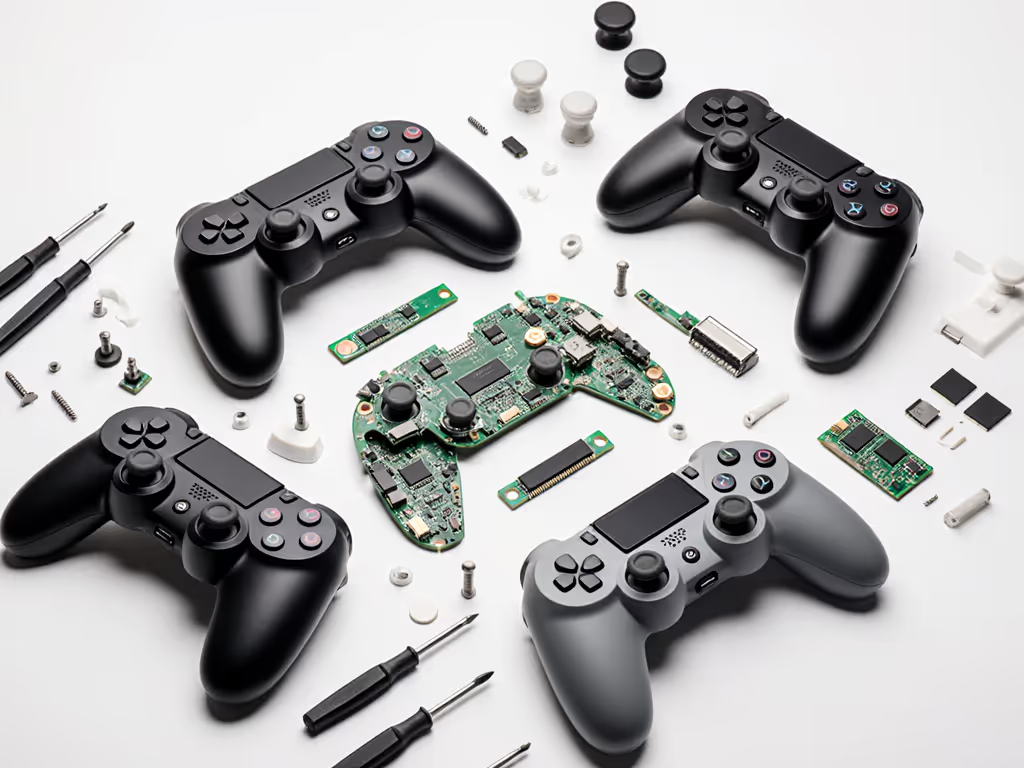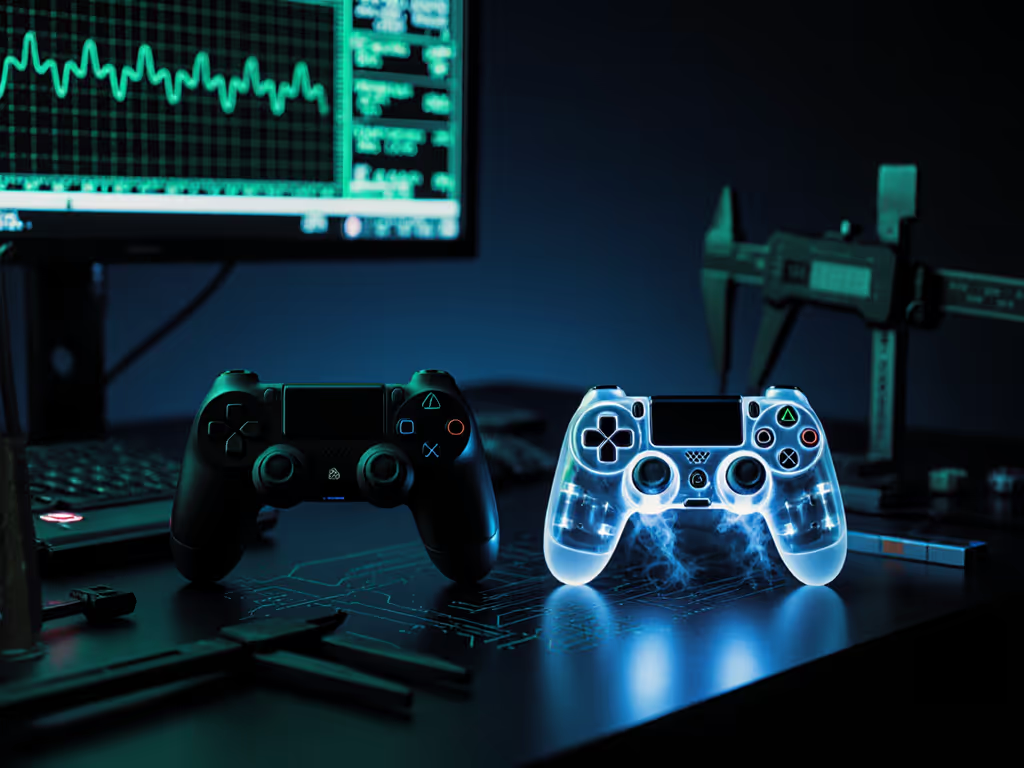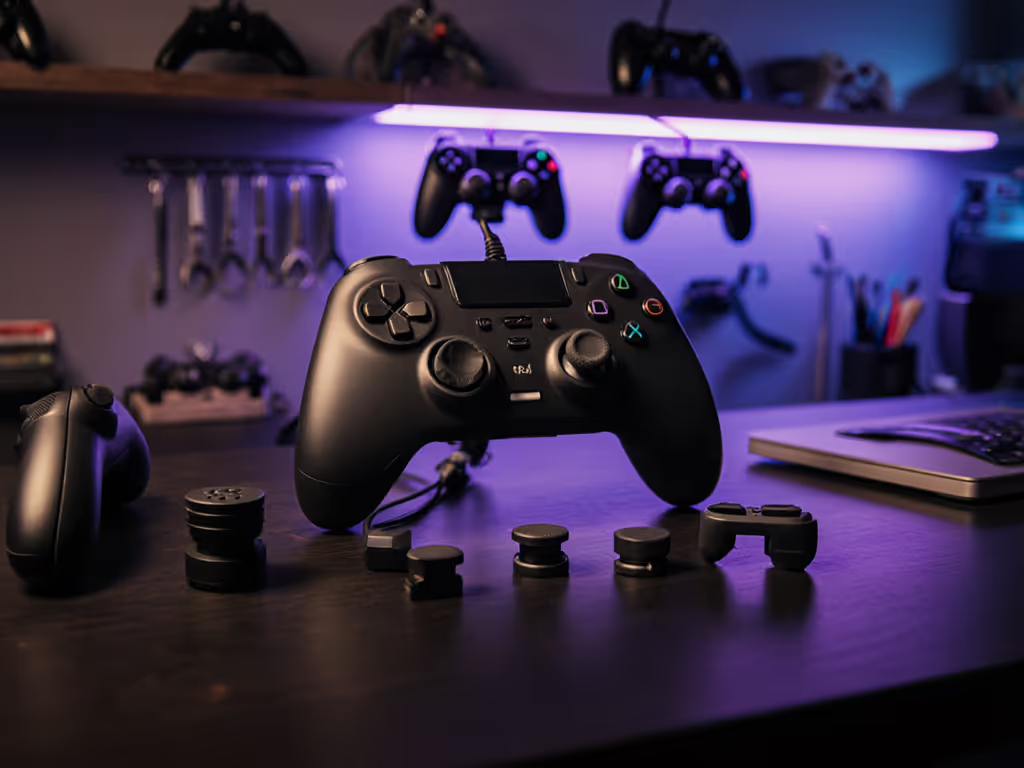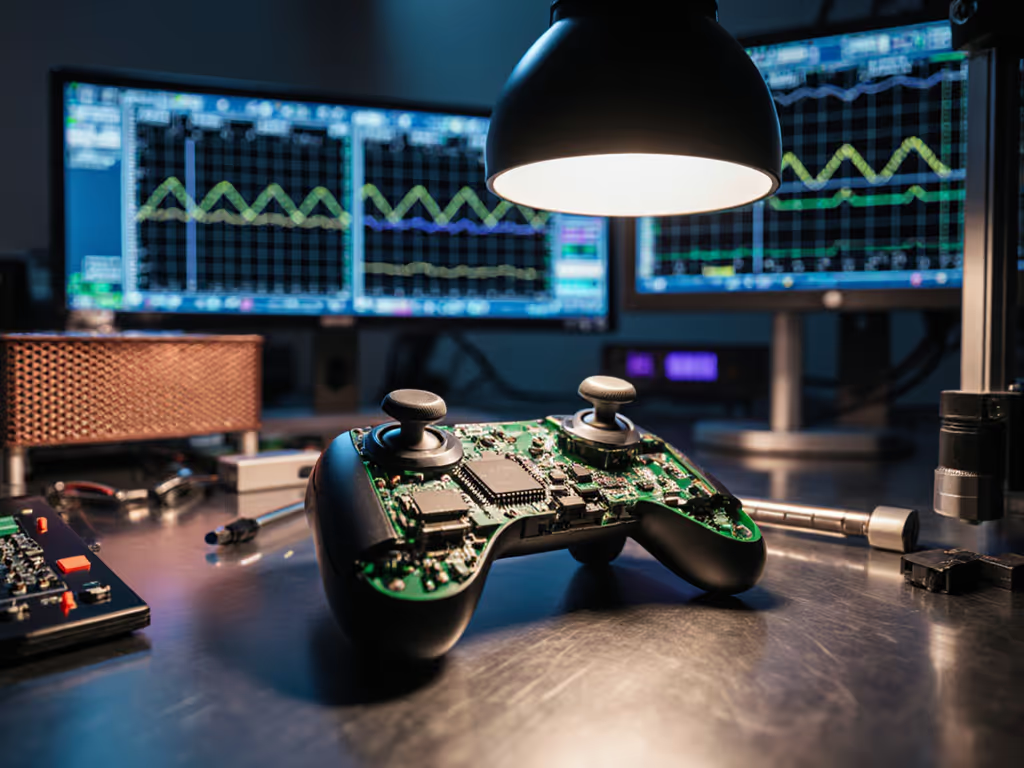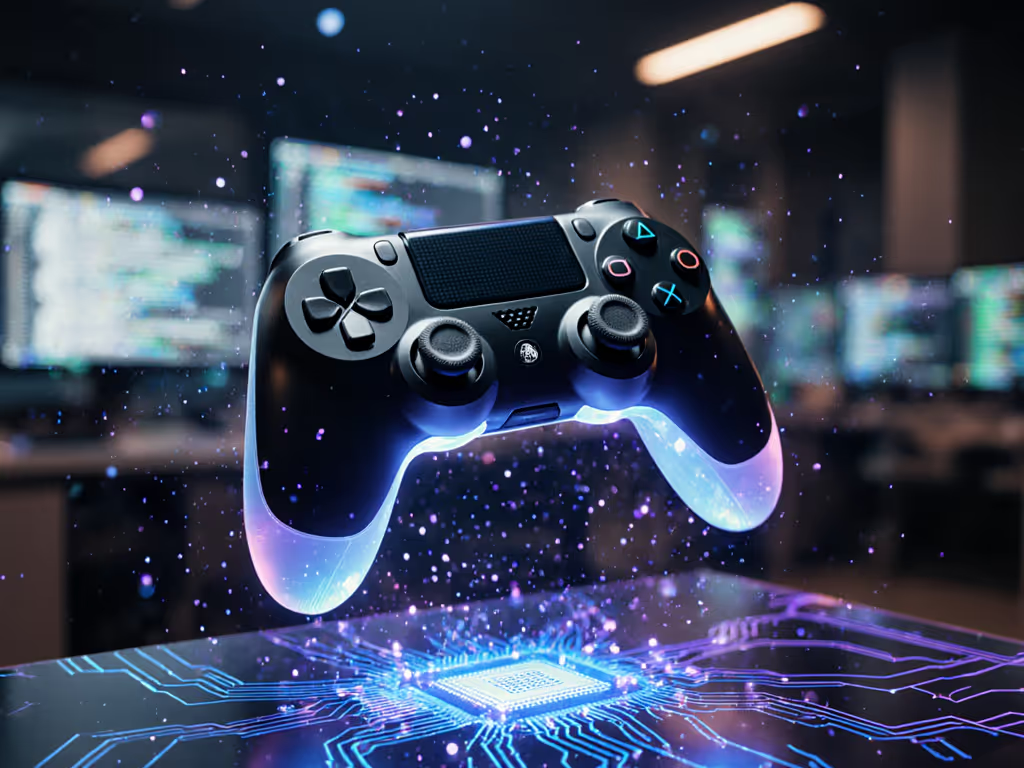
Eco-Friendly Game Controllers: Repairable Designs Beat E-Waste
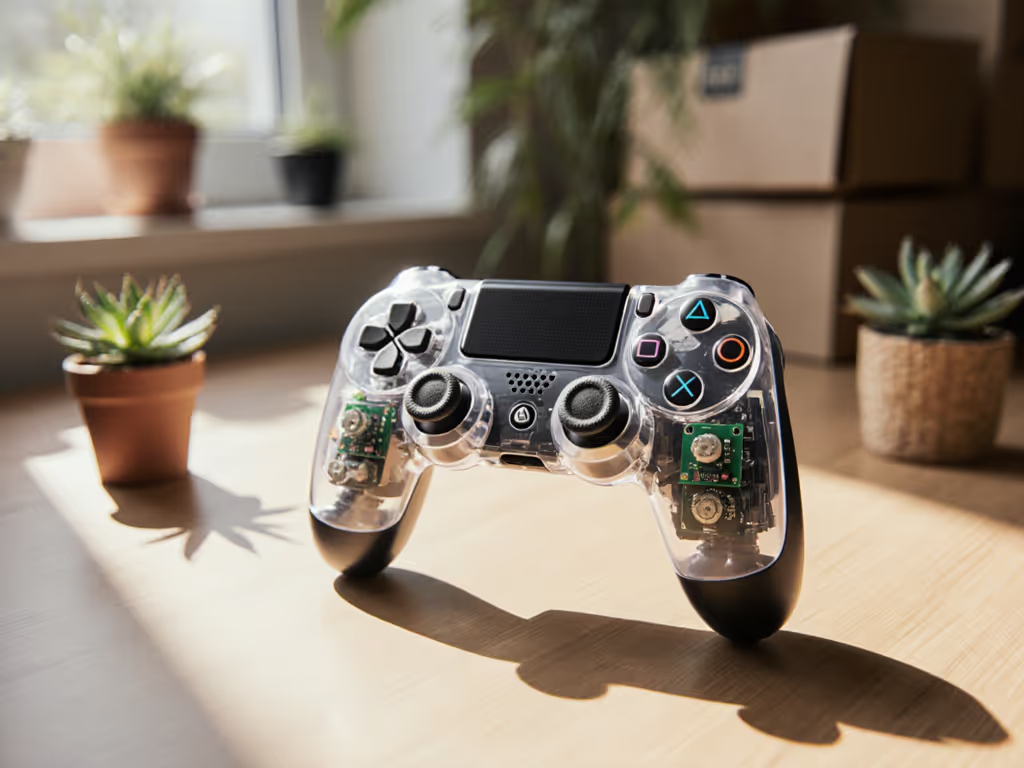
When most gamers think of eco-friendly game controllers, they imagine recycled plastics or biodegradable components. But the harsh reality is that without repairability, these "green" solutions barely scratch the surface of gaming's e-waste crisis. As someone who's spent years dissecting controllers on the workbench, I can tell you true sustainability isn't about what goes into a controller, it's about how long it stays out of landfills. With gaming peripherals contributing to the world's fastest-growing waste stream, we need solutions that address the root cause: disposable design.
What's the Real Environmental Impact of Gaming Controllers?
The gaming industry generates approximately 1.5 million tons of e-waste annually, with controllers making up a substantial portion. Consider this: the average controller lasts just 18 to 24 months before stick drift or other failures render it unusable. These devices contain valuable metals like copper and gold alongside problematic plastics that take centuries to decompose. Most end up in landfills where they leach toxins into soil and water.
The "solution" of sustainable gaming peripherals often misses the mark. Xbox's Remix controller, made with "regrind" materials from old controllers and automotive parts, gets press for its earthy patchwork aesthetic. But what they don't tell you is that it still uses the same non-replaceable analog sticks that fail within months. One-third recycled content does not matter when the entire unit becomes e-waste prematurely.
Take photos as you go. This simple practice saves hours when reassembling after repairs, and it's the first step toward understanding your controller's anatomy.
Are Biodegradable Gamepads the Answer to Our Sustainability Problems?
Recent headlines celebrated a controller "grown" from bacteria and yeast (SCOBY) by designers Vivien Roussel, Madalina Nicolae, and Marc Teyssier. While fascinating biologically, these biodegradable gamepads face critical limitations. They integrate electronics during growth, but the electronic components themselves are not biodegradable. At end of life, you'd still need to separate and dispose of the circuitry separately. The concept is scientifically intriguing, but practically limited for mass adoption in our current infrastructure.
The deeper issue? Biodegradability addresses disposal but ignores the resource consumption of manufacturing. Creating replacement controllers for stick drift alone consumes enough raw materials to build 150,000 new smartphones annually. Preventing failure beats biodegrading the aftermath. For a technical overview, see our guide on modern controller tech and how it tackles drift and lag.
Why is Repairability More Important Than Recycled Materials?
Consider this data point: a controller that lasts five years through repairability reduces its environmental impact by 60% compared to a "green" model replaced annually. Green gaming technology headlines rarely mention that manufacturing creates 80% of a product's lifetime emissions, far more than disposal.
Most "eco-friendly" controllers still follow the same flawed design principles:
- Sealed units with proprietary screws
- Soldered components instead of modular parts
- Glued casings that prevent disassembly
I once bought a 'dead' controller lot for the price of a new game. Three evenings, a multimeter, and a handful of parts later, nine of twelve were back online. Selling most covered costs, keeping one changed my main. Repairs didn't just save money, they sharpened my feel for inputs.
What Should I Look For in a Truly Sustainable Controller?
Electrical Architecture
Controllers with Hall Effect sensors (magnetic instead of potentiometer based) resist drift three to four times longer than standard sticks. But, crucially, they must have replaceable modules. Check if the manufacturer sells stick assemblies separately.
Mechanical Design
Look for:
- Standard Phillips or Torx screws (not proprietary pentalobe)
- Tool-free access to sticks and buttons
- Available replacement parts catalog
Longevity Features
The best sustainable gaming peripherals include:
- Interchangeable stick modules
- Replaceable batteries
- Service documentation
Open it carefully, and it will open possibilities. For hand health and long sessions, check our ergonomic controller guide. I've seen controllers where prying with plastic tools saved assemblies that heat guns would have ruined.
How Can I Extend the Life of My Current Controller?
Stick Drift Prevention
Imperative steps for maintaining analog sticks:
- Clean regularly with 90%+ isopropyl alcohol (apply with cotton swab around base)
- Avoid excessive force during gameplay
- Store with sticks centered when not in use
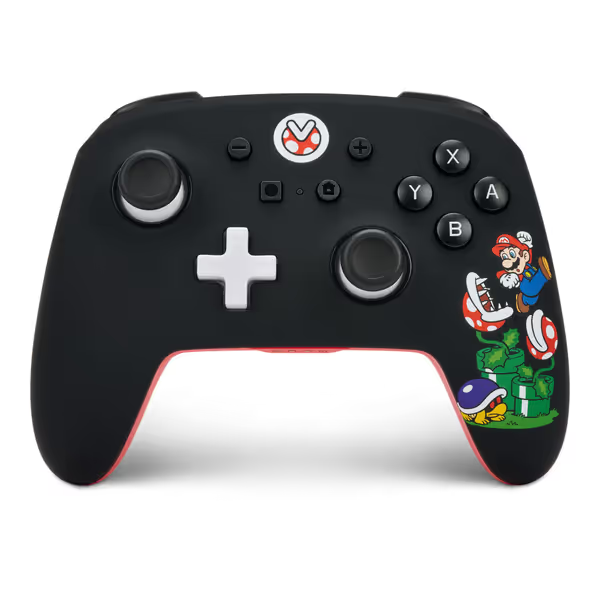
PowerA Enhanced Wireless Controller - Mario Mayhem
When Failure Occurs
Tool callouts for basic repairs:
- Precision screwdriver set (JesClick 110-in-1 recommended)
- Flux pen for soldering work
- Replacement pots or Hall sensors (35mm standard size)
Risk warnings: Never attempt to replace surface-mount components without proper training. Focus on modular repairs first: stick assemblies, buttons, and cables represent 85% of controller failures and are user-replaceable.
Supporting Repair Infrastructure
Seek out:
- Manufacturers with official controller recycling programs
- Community repair databases (iFixit scores >= 7/10 are ideal)
- Local maker spaces with soldering stations
Microsoft's current take-back program only accepts working controllers for material recovery, meaning failed units still end up in landfills. This isn't recycling; it's greenwashing.
What's the Actionable Path Forward?
True sustainability requires shifting from consumption to maintenance. Before your next controller purchase, demand:
- Minimum 5 year parts availability guarantee
- Service manuals published online
- Modular design with user-replaceable components
Start with your current setup. Test stick resistance, and if you notice even slight drift, address it now before conductive debris permanently damages the potentiometer. Disassemble carefully, document each step, and source genuine replacement parts. The controller market won't change until we vote with our wallets for repairable designs. If you're buying new, our tested best Hall effect controllers roundup highlights durable, drift-free options across platforms.
The best controller isn't the one with the most recycled content or the fanciest biodegradable shell, it is the one you can maintain and improve. As I've learned from countless bench repairs, every controller has a second life waiting to be unlocked. Take photos as you go, keep your tools sharp, and remember: the most eco-friendly controller is the one already in your hands.
